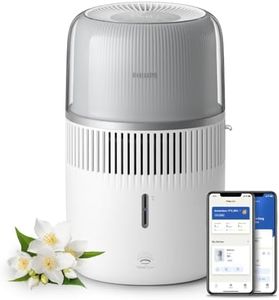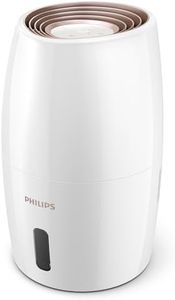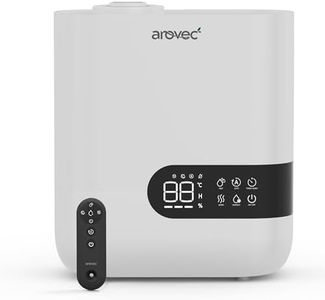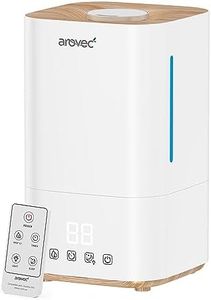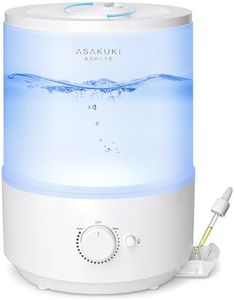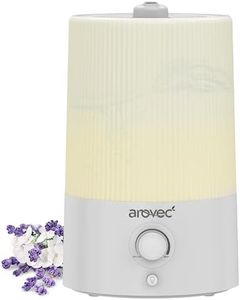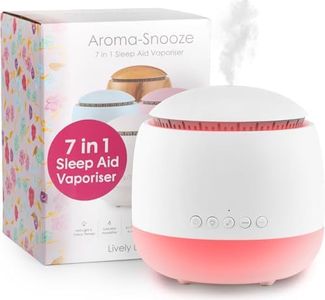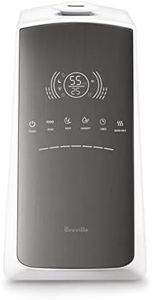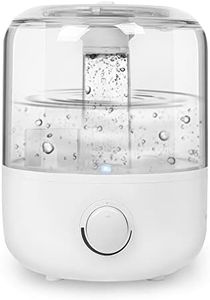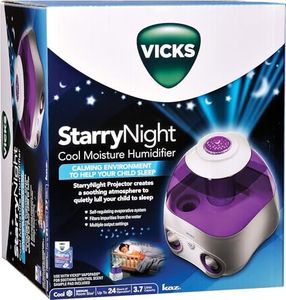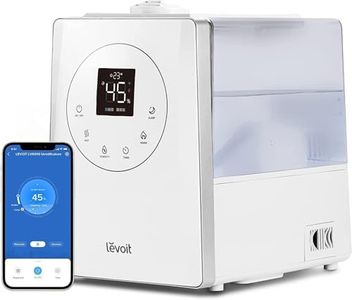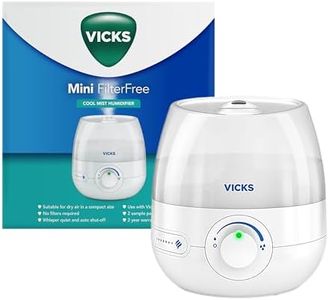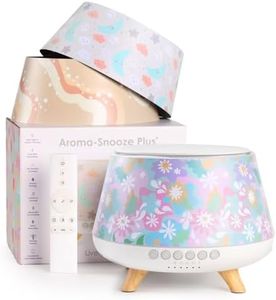We Use CookiesWe use cookies to enhance the security, performance,
functionality and for analytical and promotional activities. By continuing to browse this site you
are agreeing to our privacy policy
10 Best Humidifier For Babies
From leading brands and best sellers available on the web.By clicking on a link to a third party's website, log data is shared with that third party.
Buying Guide for the Best Humidifier For Babies
Choosing a humidifier for your baby is important because it helps maintain optimal air moisture levels in the baby's room, making the environment more comfortable and supporting healthy breathing, especially during dry seasons or if your baby has congestion. When shopping for a humidifier, you'll want to focus on specs that make the product safe, easy to use, and effective for a nursery environment. Understanding what the specifications mean and how they match your specific needs will help you choose the best fit for your family.Type (Cool Mist vs. Warm Mist)The type of humidifier defines how it adds moisture to the air. Cool mist humidifiers release a cool vapor and are generally safer for babies because there is no hot water involved, avoiding the risk of burns. Warm mist humidifiers produce steam and may help kill germs and bacteria, but they get hot and might not be recommended in a child's room. If safety is your highest concern, especially for a nursery, focus on cool mist models. If you need more help with bacteria, you might consider a warm mist, but only if you can ensure your baby does not have access to the device.
Tank CapacityTank capacity tells you how much water the humidifier can hold, which affects how long it can run before needing a refill. Smaller tanks (under 1 liter) need to be refilled more often, which might be enough for short nap times or small rooms. Medium (1-2 liters) and large tanks (over 2 liters) can run overnight, making them more convenient if you want steady moisture during long sleep periods. Consider your routine and the size of your baby's room—larger rooms or longer runtimes will need a bigger tank.
Coverage AreaCoverage area indicates the maximum room size the humidifier can handle effectively, usually measured in square feet or meters. Smaller humidifiers are designed for rooms up to about 150 square feet (a small nursery), while larger ones can cover spaces up to 500 square feet or more. To get the best results, match the humidifier’s coverage with the size of your baby's room. If the unit is too small, it won't make a difference; if it's too big, it might make the room too damp.
Noise LevelNoise level describes how loud the humidifier is while running, usually measured in decibels (dB). A quiet operation (generally below 30 dB) is ideal for babies, so the device doesn't disturb sleep. If your baby is sensitive to sounds, select a model advertised as 'ultra-quiet' or with sleep-friendly features. Test the device or look for reviews about noise if possible, since a peaceful sleep environment is important for infants.
Ease of CleaningEase of cleaning refers to how simple it is to keep the humidifier free from mold, bacteria, and mineral buildup. Humidifiers that have fewer parts and wider openings are easier to clean. Units that are hard to take apart or have tight corners can be challenging and may lead to frequent mold growth. Since babies are sensitive, pick a humidifier that you can clean thoroughly every few days without too much effort.
Auto Shut-offAuto shut-off is a safety feature that turns the humidifier off automatically when the water runs out. This prevents the unit from overheating or breaking, which is particularly important for overnight use or while you’re away. For a baby’s room, always choose a humidifier with this function so you don’t have to worry about constantly checking the water level.
Filter or Filterless DesignSome humidifiers use filters to trap impurities, while others are filterless. Filter-based humidifiers might provide cleaner moisture but require regular filter replacements, which is extra maintenance. Filterless versions are easier to maintain, but you have to be diligent about cleaning. Decide based on your willingness to keep up with maintenance and whether your baby is especially sensitive to allergens or dust.
